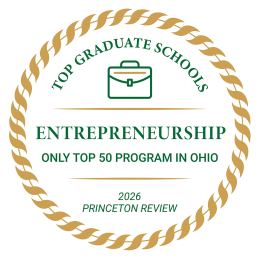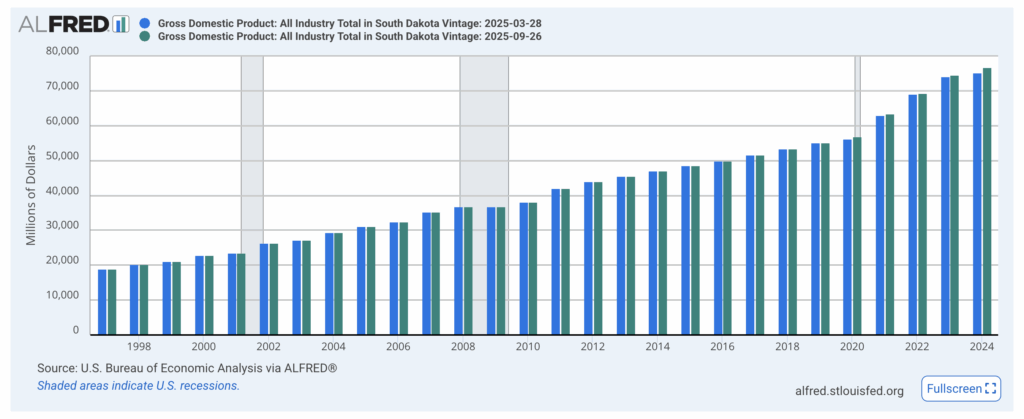How NVIDIA Is Fueling Economic Development Across the US – NVIDIA Blog

Report on National AI Initiatives and Their Alignment with Sustainable Development Goals
This report outlines a series of strategic initiatives aimed at democratizing access to Artificial Intelligence (AI) technology across the United States. These collaborations between NVIDIA, government bodies, and educational institutions are designed to foster innovation and workforce development, directly contributing to the achievement of several United Nations Sustainable Development Goals (SDGs).
State and Municipal Collaborations for Sustainable Growth
State and city-level partnerships are creating AI-driven ecosystems that promote economic growth, innovation, and sustainable community development, aligning with SDG 8, SDG 9, and SDG 11.
Utah’s AI Factory: Advancing SDG 9 (Industry, Innovation, and Infrastructure)
The State of Utah, in partnership with the University of Utah, NVIDIA, and HPE, has launched a state-level AI factory. This initiative represents a significant step towards building resilient infrastructure and fostering innovation.
- A $50 million public and philanthropic investment will triple the university’s computing capacity, establishing robust AI infrastructure (SDG 9).
- The initiative will support advanced scientific and healthcare research in areas such as Alzheimer’s, cancer, and mental health, contributing to SDG 3 (Good Health and Well-being).
- The state is also implementing the NVIDIA Deep Learning Institute University Ambassador Program to equip educators with AI skills, supporting SDG 4 (Quality Education) and SDG 8 (Decent Work and Economic Growth).
Rancho Cordova’s Municipal Strategy: A Model for SDG 11 (Sustainable Cities and Communities)
The city of Rancho Cordova, California, is developing a municipal AI ecosystem in collaboration with NVIDIA and the Human Machine Collaboration Institute (HMCI). This strategy serves as a model for creating inclusive, resilient, and sustainable urban economies.
- Economic Development: The primary goal is to attract AI businesses by providing reliable infrastructure and a skilled workforce, directly supporting SDG 8.
- Sustainable Reinvestment: Revenue generated from new AI businesses will be reinvested into local workforce development programs and research, creating a sustainable economic cycle that enhances community resilience (SDG 11).
- Inclusive Innovation: The initiative demonstrates that communities of any size can integrate AI technology to drive local economic growth and opportunity, promoting inclusive development.
Educational Partnerships for Inclusive and Equitable Quality Education (SDG 4 & SDG 10)
To ensure the benefits of AI are widely distributed, numerous partnerships focus on integrating AI education into diverse academic settings, with a strong emphasis on reducing inequalities and providing quality education for all.
Miles College: Reducing Inequalities Through AI Fluency (SDG 10)
A collaboration with Miles College, a Historically Black College (HBCU) in Alabama, aims to reduce the digital divide and promote equal opportunity through comprehensive AI integration.
- Core Competency: The initiative seeks to establish AI fluency as a core competency for every graduate, preparing them for leadership and high-demand careers, thereby reducing inequalities (SDG 10).
- Capacity Building: NVIDIA is providing access to resources, development tools, and training to certify faculty and students, enhancing the quality of education (SDG 4).
- Regional Innovation: The college’s 2150 Center for Innovation, Commercialization and Growth supports local entrepreneurs, fostering regional economic development in line with SDG 8.
Broadening Access Through Diverse Collaborations (SDG 17: Partnerships for the Goals)
A network of partnerships with various institutions and organizations is crucial for scaling AI education and ensuring its accessibility.
- California College of the Arts: Integrates AI and GPU-accelerated computing into creative arts and design programs, fostering innovation in new sectors (SDG 9).
- Black Tech Street: Aims to train up to 10,000 individuals in AI in Tulsa, Oklahoma, promoting decent work and reducing regional inequalities (SDG 8, SDG 10).
- Black Women in Artificial Intelligence: A three-year agreement expands access to AI education and professional networks, contributing to SDG 5 (Gender Equality) and SDG 10.
- StudyFetch: This AI-powered educational platform is bringing NVIDIA Academy courses to high-school students, addressing educational gaps and promoting workforce readiness from an early age (SDG 4).
Analysis of the Article in Relation to Sustainable Development Goals (SDGs)
1. Which SDGs are addressed or connected to the issues highlighted in the article?
-
SDG 4: Quality Education
- The article extensively discusses initiatives to embed AI education across the U.S., from K-12 to universities and adult education programs. It highlights collaborations with institutions like Miles College, California College of the Arts, and programs with StudyFetch for high school students, all aimed at equipping learners with AI skills.
-
SDG 8: Decent Work and Economic Growth
- A primary goal of the initiatives is to drive “workforce development and economic growth in communities nationwide.” The city of Rancho Cordova’s strategy, for example, is explicitly designed to “generate economic value” and “strengthen the economy” by creating an AI ecosystem that attracts businesses and creates workforce pipelines.
-
SDG 9: Industry, Innovation, and Infrastructure
- The article focuses on building the necessary infrastructure for AI innovation. The University of Utah’s “AI factory” initiative, which involves a “$50 million investment into AI infrastructure” to triple computing capacity, is a direct example of building resilient infrastructure to foster innovation and scientific research.
-
SDG 10: Reduced Inequalities
- The article emphasizes democratizing access to AI technology beyond traditional tech hubs. It specifically mentions partnerships with Miles College, a historically Black college (HBCU), Black Tech Street, and Black Women in Artificial Intelligence. These collaborations aim to expand opportunities and ensure that underrepresented communities are included in the AI-driven economy.
-
SDG 17: Partnerships for the Goals
- The entire article is a showcase of multi-stakeholder partnerships. It details collaborations between a private company (NVIDIA), state governments (Utah, California), cities (Rancho Cordova), universities (University of Utah, Miles College), and non-profit organizations (Black Tech Street, HMCI) to achieve common goals in education and economic development.
2. What specific targets under those SDGs can be identified based on the article’s content?
-
Under SDG 4 (Quality Education):
- Target 4.4: “By 2030, substantially increase the number of youth and adults who have relevant skills, including technical and vocational skills, for employment, decent jobs and entrepreneurship.” The article directly supports this by describing programs to provide AI skills and certification to students and educators at universities, community colleges, and high schools to prepare them for the future workforce.
-
Under SDG 8 (Decent Work and Economic Growth):
- Target 8.2: “Achieve higher levels of economic productivity through diversification, technological upgrading and innovation…” The initiatives in Utah and Rancho Cordova aim to boost regional economic development by creating AI ecosystems, attracting new businesses, and fostering innovation, which aligns with this target.
-
Under SDG 9 (Industry, Innovation, and Infrastructure):
- Target 9.5: “Enhance scientific research, upgrade the technological capabilities of industrial sectors in all countries…” The University of Utah’s AI factory is designed to support “healthcare and scientific research, including projects focused on Alzheimer’s, cancer, genetics and mental health,” which is a clear example of enhancing research capabilities through technological investment.
-
Under SDG 10 (Reduced Inequalities):
- Target 10.2: “By 2030, empower and promote the social, economic and political inclusion of all, irrespective of age, sex, disability, race, ethnicity, origin, religion or economic or other status.” The collaborations with Miles College (HBCU), Black Tech Street, and Black Women in Artificial Intelligence are explicitly aimed at expanding access to AI education and professional networks for Black communities, thereby promoting economic inclusion.
-
Under SDG 17 (Partnerships for the Goals):
- Target 17.17: “Encourage and promote effective public, public-private and civil society partnerships, building on the experience and resourcing strategies of partnerships.” The article is built around examples of these partnerships, such as NVIDIA (private) working with the State of Utah (public) and the University of Utah (academic), or with the City of Rancho Cordova (public) and HMCI (civil society).
3. Are there any indicators mentioned or implied in the article that can be used to measure progress towards the identified targets?
-
For SDG 4, Target 4.4:
- Number of people trained: The article mentions a goal to “train up to 10,000 people in AI” through the Black Tech Street collaboration.
- Proportion of faculty/students engaged with AI: At Miles College, it is noted that “nearly half of faculty regularly integrating AI into course design” and the goal is for “AI fluency to be a core competency for every Miles College graduate.”
-
For SDG 8, Target 8.2:
- Economic investment: The article quantifies the investment in Utah’s AI infrastructure as a “$50 million investment of public and philanthropic funds.”
- Creation of business ecosystems: Rancho Cordova’s plan to “attract AI businesses” and reinvest revenue can be measured by the number of new businesses established and the revenue generated.
-
For SDG 9, Target 9.5:
- Increase in computing capacity: The Utah initiative will “triple the university’s computing capacity.”
- Proportion of research supported by AI: At Miles College, it is stated that “about 60% of the college’s research supported by AI.”
-
For SDG 10, Target 10.2:
- Number of partnerships with minority-focused institutions: The article lists specific collaborations with Miles College (HBCU), Black Tech Street, and Black Women in Artificial Intelligence.
-
For SDG 17, Target 17.17:
- Number and type of partnerships: The article details numerous partnerships between private (NVIDIA), public (states, cities), and academic/civil society (universities, non-profits) entities.
4. Summary Table of SDGs, Targets, and Indicators
| SDGs | Targets | Indicators |
|---|---|---|
| SDG 4: Quality Education | 4.4: Increase the number of youth and adults with relevant skills for employment. |
|
| SDG 8: Decent Work and Economic Growth | 8.2: Achieve higher economic productivity through technological upgrading and innovation. |
|
| SDG 9: Industry, Innovation, and Infrastructure | 9.5: Enhance scientific research and upgrade technological capabilities. |
|
| SDG 10: Reduced Inequalities | 10.2: Empower and promote the social and economic inclusion of all. |
|
| SDG 17: Partnerships for the Goals | 17.17: Encourage effective public, public-private and civil society partnerships. |
|
Source: blogs.nvidia.com
What is Your Reaction?
 Like
0
Like
0
 Dislike
0
Dislike
0
 Love
0
Love
0
 Funny
0
Funny
0
 Angry
0
Angry
0
 Sad
0
Sad
0
 Wow
0
Wow
0
















































:focal(1500,1000)/https://media.globalcitizen.org/a6/9a/a69a4720-d8a1-4715-b596-18738d03c05c/rotary_polio_hero_image.jpg?#)







/countries/sri-lanka/photo-credit---dmc-sri-lanka.tmb-1200v.jpg?sfvrsn=dc298bcc_1#)



















